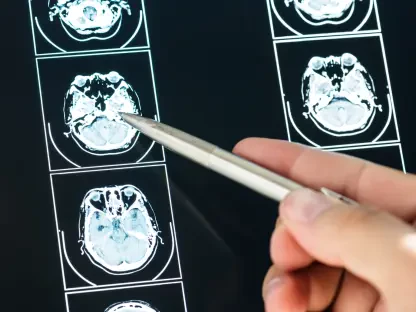A significant recent legal ruling by U.S. District Judge Angel Kelley has permanently prevented the National Institutes of Health (NIH) from capping indirect research cost funding at 15%, a move that would have caused substantial financial repercussions for research institutions. If the proposed cap had been implemented, the reimbursement rates for these institutions would have drastically decreased, costing them billions of dollars annually. Judge Kelley concluded that NIH’s action was arbitrary and capricious, violated federal statutes, and did not follow proper rulemaking procedures.
The ruling was an extension of a preliminary injunction issued by Kelley earlier in the year. The decision came in response to NIH’s request for a final judgment to speed up the appeals process, which sets the stage for further legal proceedings. The NIH has already indicated plans to appeal the ruling in the 1st U.S. Circuit Court of Appeals. The ruling highlights the ongoing tensions between federal agencies and research institutions over the administration and funding of scientific research, with significant implications for the future of academic and medical research in the United States.
Legal and Financial Implications
The plaintiffs in this case included a diverse group of stakeholders such as the Association of American Universities, over 20 Democratic state attorneys general, and numerous higher education institutions. They contended that the NIH lacked the authority to unilaterally impose such a cap, especially in light of a 2018 statute that prohibits altering reimbursement rates. These research institutions argued that the cap would severely hinder their ability to cover essential overhead costs, including expenses for buildings, laboratories, administrative staffing, equipment, and utilities.
Since the beginning of the year, the NIH’s decision to cap indirect costs has already created widespread disruptions. Universities like Columbia and the University of California system have had to freeze hiring and adopt other budgetary measures in anticipation of reduced federal funding. The financial impact of a 15% cap would be immense, with specific institutions like UCSF, Johns Hopkins, the University of Pennsylvania, and the University of Michigan expecting losses of over $100 million each, according to an analysis by the New York Times. These preemptive measures underscore the severity of the financial threat posed by the NIH’s proposed cap.
Judge Kelley’s ruling acknowledged the concerns raised by the plaintiffs, noting that the NIH’s cap could cause significant harm, including the suspension of research projects and clinical trials, layoffs, and reduced support for medical students. While the NIH argued that capping indirect costs would redirect funds to direct research activities and thereby enhance their mission, this stance was undermined by conflicting statements regarding potential savings of $4 billion. The decision to maintain current negotiated reimbursement rates of 27-28% provides temporary relief to these institutions, but much uncertainty remains as the legal battle is far from over.
Broader Implications for Research Institutions
The ruling represents a temporary victory for research universities, but the NIH’s impending appeal suggests a protracted legal dispute ahead. As the NIH prepares for its appeal, the future of indirect research funding remains uncertain, emphasizing the critical financial dependence of research institutions on stable and adequate indirect cost reimbursements. This ruling underscores the complex relationship between federal agencies and research institutions and raises important questions about the administration and funding of scientific research.
The decision has broader implications for the future of academic and medical research in the U.S. as it underscores the importance of indirect cost reimbursements in sustaining research infrastructure. Research institutions rely heavily on these funds to maintain their capabilities, and any disruption to this funding stream could have cascading effects on their ability to conduct cutting-edge research. The court’s decision highlights the ongoing conflict between ensuring adequate funding for research institutions and the federal government’s efforts to optimize the allocation of resources.
Moving forward, this case will likely serve as a precedent for future legal challenges related to federal research funding policies. It has brought to the forefront the critical issue of how indirect costs are managed and reimbursed and has highlighted the legal and operational conflicts that can arise when these policies are altered. For research institutions, this ruling serves as a crucial reminder of the importance of vigilant advocacy and legal action in protecting their financial and operational interests.
Future Considerations
A significant legal decision by U.S. District Judge Angel Kelley has permanently barred the National Institutes of Health (NIH) from imposing a 15% cap on indirect research cost funding. This proposed cap would have led to considerable financial strain on research institutions, potentially costing them billions per year due to drastically reduced reimbursement rates. Judge Kelley found NIH’s action to be arbitrary and capricious, in violation of federal laws, and not in compliance with proper rulemaking procedures.
This ruling builds on a preliminary injunction issued earlier by Judge Kelley and came after NIH sought a final judgment to expedite the appeals process, paving the way for further legal disputes. The NIH has already announced plans to appeal the decision in the 1st U.S. Circuit Court of Appeals. This ruling underscores the ongoing conflict between federal agencies and research institutions regarding the governance and funding of scientific research, with significant repercussions for the future landscape of academic and medical research in the U.S.









